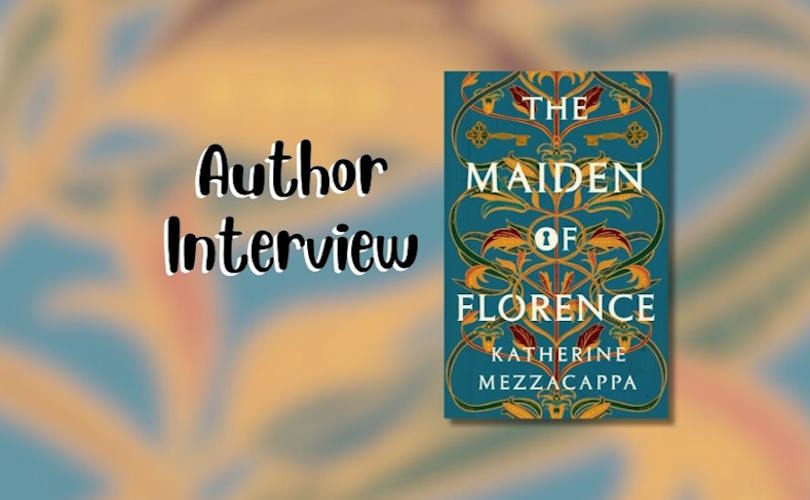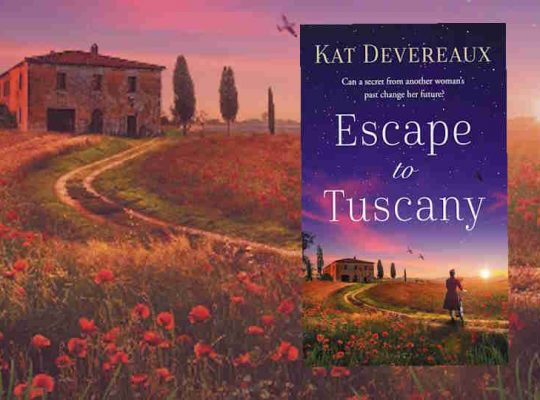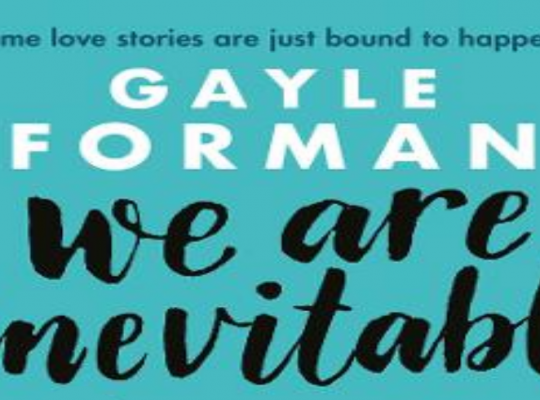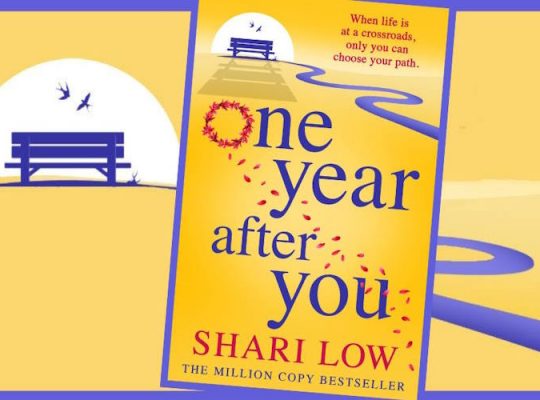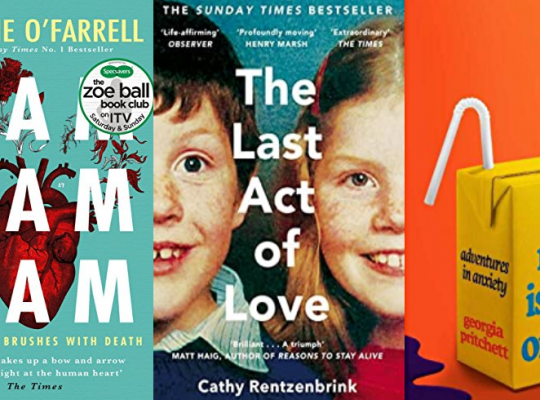A couple of years ago, when I was a wannabe author dreaming of landing a book deal and becoming a published author, I ‘met’ Katherine Mezzacappa in a Facebook group and she very kindly offered me advice and encouragement.
So I’m very excited to be interviewing her today about her new novel,The Maiden of Florence. I know it’s based on a true story. How did you come across it?
I’d accompanied my son to a meeting with a therapist who was trying to get him to engage with high school, only we were running late and so I rushed out without a book to read or my Kindle. Faced with an hour in a waiting room fiddling with my phone, I looked to see what magazines they had (this was before Covid): gossip ones, mainly, but in the midst of them was a medical journal dedicated to erectile dysfunction.
Let me guess – you chose to read about erectile disfunction rather than celebrity gossip?
I did! And there was a tiny historical column inside which told the story of the annulment of the marriage of Vincenzo Gonzaga, heir to the dukedom of Mantua, in 1584. It had never been consummated, the reason being a malformation of his bride, a princess of Parma. For dynastic reasons, Vincenzo had to find a new bride who was capable of providing him with heirs. He wanted his cousin, Eleonora de’ Medici, but his family had snubbed the girl’s stepmother, second wife of the Grand-Duke of Florence, as a mere Venetian adventuress. The stepmother saw the chance of revenge, claiming that Vincenzo’s own virility was in question. Permission for the marriage would only be given if he could give proof that he could deflower a virgin. The Grand-Duke’s most senior minister was despatched to find a suitable girl amongst Florence’s many orphanages. Her reward would be a dowry and a husband would be found for her. Giulia Albizzi was taken under conditions of great secrecy to Venice to meet Vincenzo. After she had served her purpose (the act taking place more or less under observation) Giulia disappears from the Medici correspondence. Florentine diarists tell us that the husband found for her was Giuliano, a musician, and a Roman. Being a musician he was of low social status (at that time) and being Roman made him a foreigner who could be kicked out of Florence if he stepped out of line. Giulia’s story crops up intermittently over the centuries but is treated as though it’s a comic fable from the Decameron. Once I got hold of the contemporary correspondence (now in the Medici archive in Florence) I realised that what I was looking at was closer to a tragedy. So I wrote Giulia’s story in her words. I wanted to give her the voice she had been denied by these powerful people who were in charge of her body and her life. The second part of the story switches to Giuliano’s point of view because he too was also the tool of his masters. In the final part of the book Giulia achieves a kind of revenge. So the first part is fiction based on fact, the latter part fiction (but none the less based on research).
I’ve been working on a time travel novel for several years now, but what stops me from finishing it is my fear of getting the historical details wrong. You really get across a sense of the bustling streets and alley ways of Renaissance Florence and Venice. How do you manage that? I presume you haven’t time travelled back four hundred years yourself?
Sadly not, but I made many visits to both cities (as well as to Mantua). My husband and sons were very patient with what I sold to them as mini-breaks when they were really research trips. Venice perhaps preserves more of its original aspect than Florence, where there was a spate of rebuilding in the nineteenth century that demolished a number of medieval streets. But the churches are still there, bar some changes, including the one in which I have Giulia and Giuliano marry. There is a wonderful survival though in the Palazzo Davanzati, now a museum, so I used it as the house of the Medici minister, moving it though to the Lungarno. In Venice we don’t know where the house is that Giulia was taken to, although we have a description of why it was particularly suited to its purpose. Giulia and Giuliano are eventually obliged to leave Florence, and Venice is where they are sent, but since this is the fictional part I had leeway as to where they went to live. In fact I have put them in the parish of San Giobbe, because that church had Florentine patrons.
The museum of the Innocenti orphanage in Florence was a particularly useful source; they have a collection of tokens that mothers left with their babies, in the hope that they would one day be able to reclaim their children. These would break your heart. I made this Giulia’s first home, as she would not have gone to the orphanage of the Pietà until she was older, and it’s the Pietà where she was found. I had a stroke of luck there as I discovered that the Pietà, long gone as an orphanage, is now a major History of Art library, the Kunsthistorisches Institut, and I had studied there for another project every Monday for about a year. So I didn’t know the building’s history, but I had been inside it. This made me feel closer to Giulia, as if I was being helped to write her story before I’d even come across it.
A Netgalley reviewer made the comment that Giulia’s story has more recent applicability and I think she’s absolutely right. One thing that struck me about Giulia’s story is the parallel with the Magdalen laundries in Ireland, though the Florentine stories are more about the children than their mothers. In the orphanages children were employed in the silk trade, from tending silk worms up to weaving, all for the benefit of the powerful Silk Guild, who could then claim they were supporting a charity whereas they were getting their work done for free. In Ireland, all those hotels and other organisations that patronised the Magdalen laundries could also claim they were helping unfortunates, whereas in reality they benefited from the fact that the Magdalen inmates were to all purposes enslaved.
What are you working on now?
I have recently finished the first draft of a novel set in nineteenth-century London, which centres on the story of Lucie Dumas, a French girl the novelist Samuel Butler picked up on the street in Islington. She was his mistress for about twenty years, but for a long time she didn’t even know his real name. She had other ‘gentleman callers’ to her lodgings, but some years into their relationship Butler introduced her to his close friend and ultimate biographer, and he too would visit her once a week. Like Giulia, we don’t know a great deal about Lucie besides the testimony of Butler’s manservant many years later, and what the biographer decided to share (he kept quiet about his own involvement, of course). So, as with Giulia, I am telling the story of a woman who did not have a voice.
But, I am going back to the Renaissance for my next big project. I am writing a crime novel set at the court of the Borgia pope, Alexander VI, and my unwilling sleuth is a surgeon. I am projecting this as the first of a series of five novels which take my surgeon to different Renaissance courts. He doesn’t stay that long at each because something happens each time that he will not keep silent about. He also has a nemesis, Dr Moriarty style, with whom he only comes to grips at the end of the fifth book. I’m a bit of a pantser as a writer, and writing crime is a new departure for me in which I have to plan far more than I would normally do. I quite like the discipline of that. I also think planning is going to help my other fiction. I’ll have fewer of those moments of ‘oh, what the hell do I do now?’
I had thought of a female protagonist for this series, not least because my hero trained at the School of Salerno, which unusually also trained women as doctors. But a woman unfortunately would have a lot less agency once she got her degree, unless I was to disguise her in men’s clothes. I’ve settled for my protagonist being in love with a woman he trained with, but she has become a Benedictine abbess, because at least as such she could tend her Physick Garden and treat the sick without the risk of being seen as a witch. She corresponds with the hero, and being a perceptive person points out the things he hasn’t thought about, so in that respect she is recognisable as the ‘side-kick’ beloved of crime fiction, even if she is never at the scene of the crime.
But you don’t just write historical romance, do you?
No, I write contemporary romance too. I’m also working on a romcom, set between Manchester and Umbria. I have a romcom coming out with Romaunce Books later this year, coincidentally in Venice, with the pen name Kate Zarrelli. This will be my third romance with Romaunce. I also have four novels with Zaffre Books, writing as Katie Hutton.
So when we first started talking, you mentioned that you came across the inspiration for The Maid of Florence whilst visiting a therapist with your son. If it isn’t too nosey, how’s he getting on now?
No, not too nosey at all. After a few stumbles, he sorted himself out and is now studying at University College Dublin, which he loves. I’m really proud of him.
To purchase a copy of The Maid of Florence, please click here.
About the author
Katherine Mezzacappa is an Irish writer of mainly historical fiction, currently living in Italy. She has published several novels under pen names with publishers Bonnier Zaffre and eXtasy. She works as a manuscript assessor for The Literary Consultancy. Katherine reviews for Historical Novel Society’s quarterly journal and is one of the organisers of the Society’s 2022 UK conference. In her spare time she volunteers with a used book charity of which she is a founder member.
Twitter: https://twitter.com/katmezzacappa
Facebook: https://www.facebook.com/katherinemezzacappafiction/

